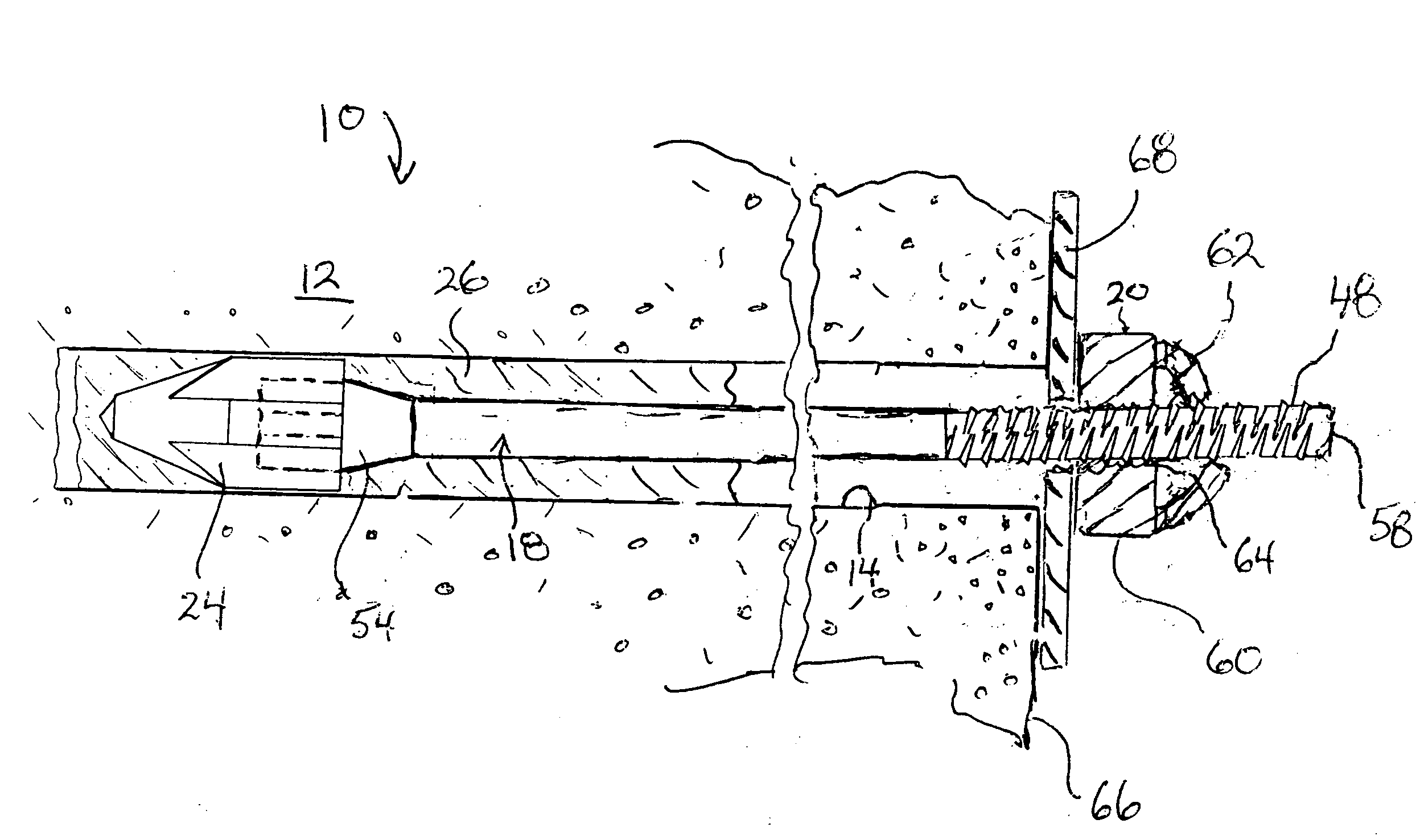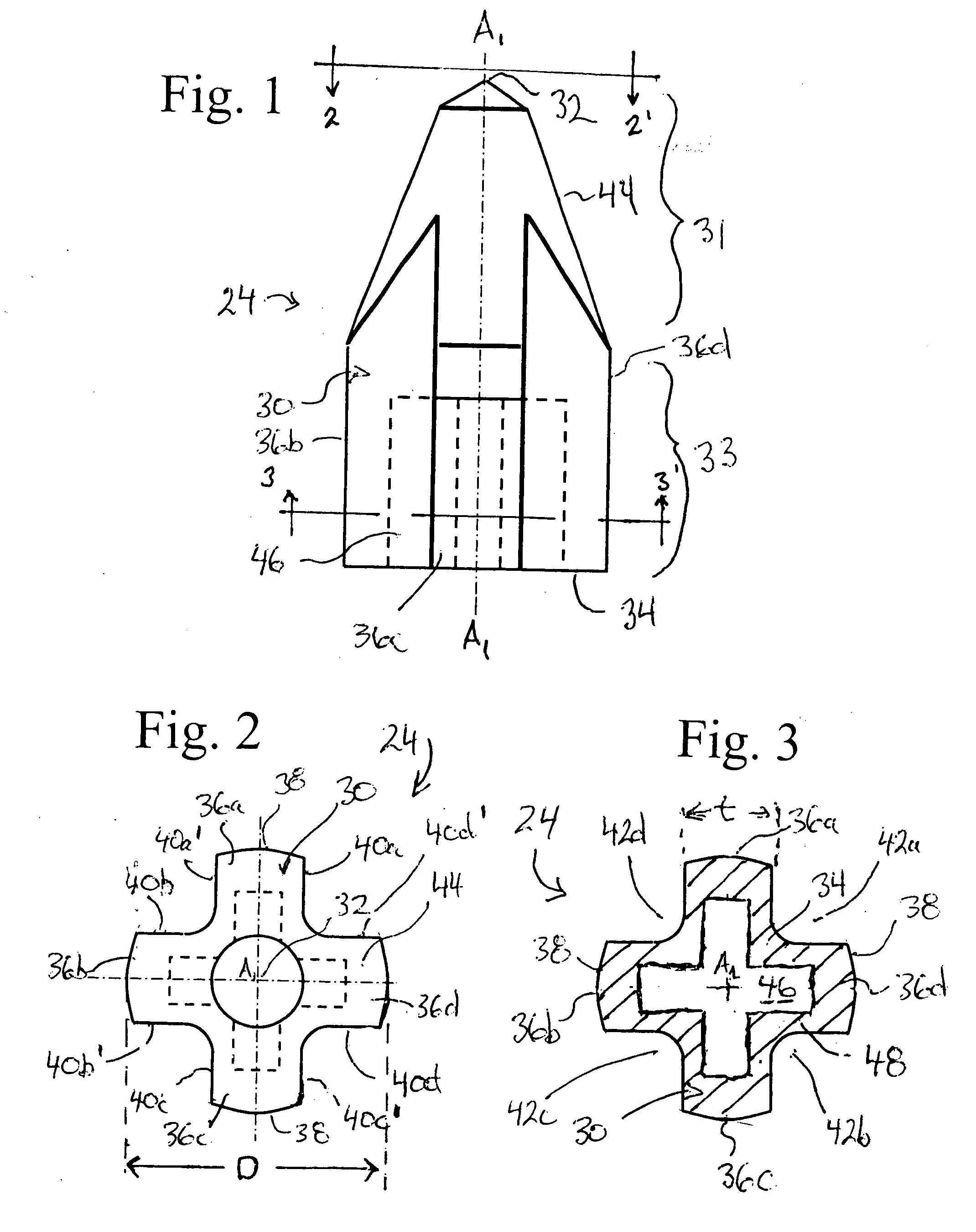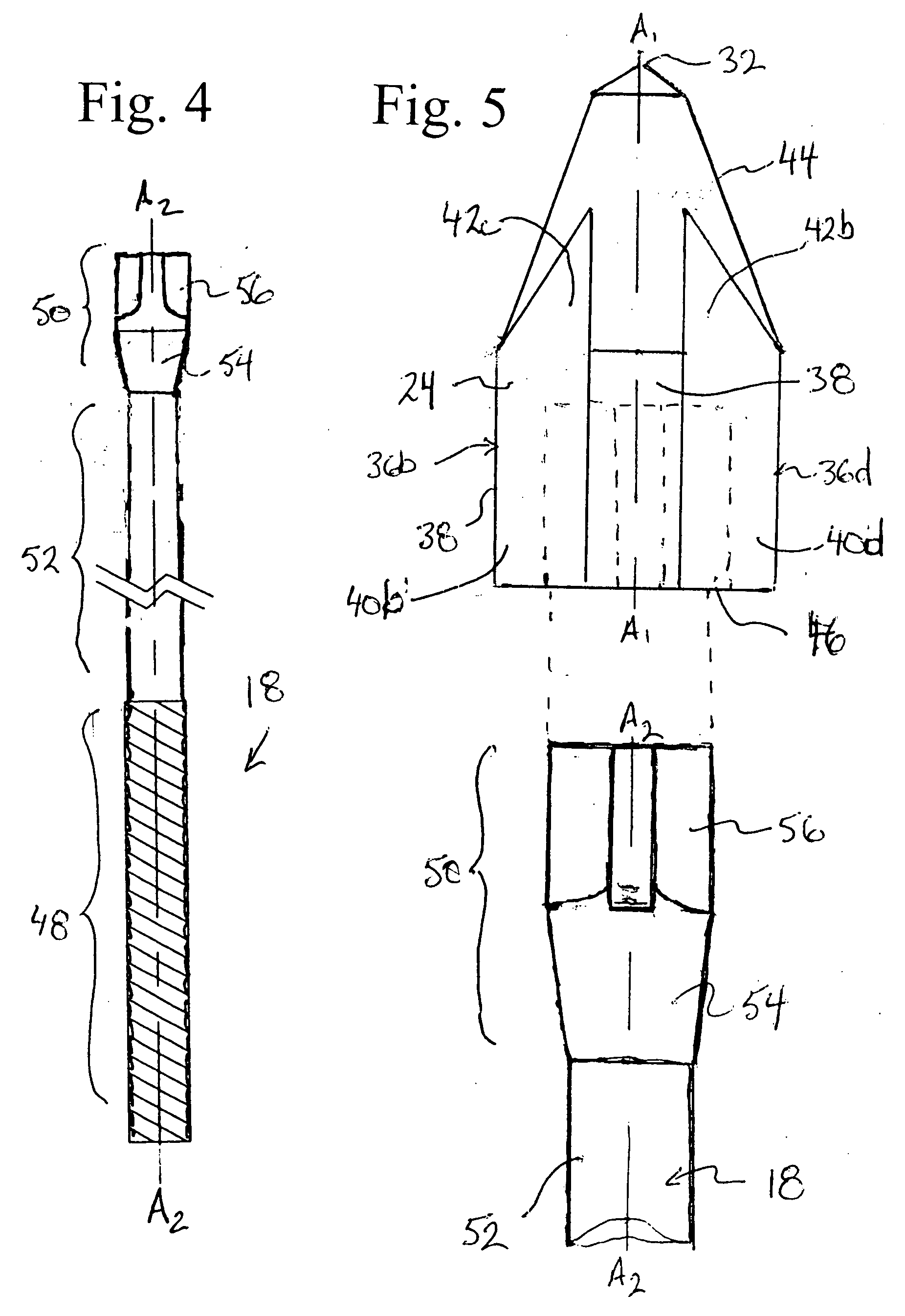[0006]To at least partially overcome at least some of the disadvantages associated with prior art wall and mine roof support systems, the present invention seeks to provide a mixing head attachment which may be quickly and easily attached to the distalmost end of an anchor rod or bolt used in either conventional concrete wall, rock wall or mine roof support systems, and which is configured to effect enhanced and more complete static mixing of the resin or
cement matrix (reduced mixing rotational speed as it is spun through the
resin matrix) and resin mixing as the anchor bolt is initially spun through the resin or
grout in a conventional manner. The mixing head advantageously allows more thorough mixing of the resin /
cement in oversized drilled hole. Oversizing occurs in weak or highly stressed rock. It can range from 0.1 mm all the way to 5 mm over the
drill bit's
diameter. The mixing head preferably also serves to centralize the conical end of the bolt in the resin or
cement matrix of the drilled hole. This ensures full encapsulation around the cone section.
[0010]Another object of the invention is to provide in a mine roof bolt
system, a mixing head which is adapted for attachment to the distal end of an anchor rod or bolt for mixing grout or resin as the bolt is spun, and which has a minimum radial
diameter of ⅔ the hole
diameter up to a maximum radial diameter of at least 80%, and more preferably at least 90% of that of the bore hole, to achieve more even mixing of grout or resin along the circumferal portions of the bore hole sidewall. This mixing head will allow increased mixing of the resin or grout through a combination of static mixing through straight
insertion of the bolt and rotational mixing from
spinning the bolt on
insertion.
[0012]The mixing head may be used with a variety of different types of anchor rods and bolts used in wall, rock and mine roof support systems including, without restriction, conventional threaded
rebar, yieldable anchor rods and strand bolts. In a most simplified construction, the mixing head is provided with a rigid or semi-
rigid body which extends axially along a
body axis. The body of the mixing head is provided with sufficient
structural integrity to effect mixing of unset resin as the mixing head is rotated about its axis. Most preferably, the body of the mixing head is constructed to avoid significant deformation upon the application of rotational torque forces thereon of between about 10 and 220 ft / lbs and more preferably about 30 to 160 ft / lbs. The mixing head includes one or more mixing blades or other projections which define a respective mixing surface or face. The mixing blades or projections may have a variety of configurations, and by way of non-limiting example may be provided as tabs, fins, spikes, posts, or the like which project radially from the
body axis. The blades or projections may be of a rigid or semi-rigid construction which is selected so as to achieve enhanced resin mixing, as the body is rotated. Preferably, one or more recesses are formed in a proximal-most end of the body which is sized and shaped for mated engagement with a distal end of the anchor bolt. The recess is used to couple the mixing head in generally co-axial arrangement with the anchor bolt with a sufficient minimum
contact force selected so that while the resin remains unset, the rotation or
spinning of the anchor rod in the bore hole effects rotation of the mixing head about its axis therewith.
[0016]The cone bolt may comprise a
metal or forged steel cone bolt which is elongated along a bolt axis with the cone-shaped or frustoconical protuberances at its distalmost end. The tongue or blade may be provided with a variety of possible cross-sectional shapes, including profiles which may include square, rectangular, crescent-shaped, semi-circular, or an oval. Preferably, however, the tongue is provided with a generally cross-shaped cross-sectional shape, so as to present contact surfaces extending normal to each other. The recesses formed in the body are most preferably selected for complementary engagement with the cone bolt tongues or blades, and more preferably are formed with a direct complementary cross-sectional profile, whereby insertion of the tongue or blade into the recess retains the mixing head on the distal end of the anchor bolt in co-axial alignment thereon in a friction fit. The mated engagement between the tongue or blade and the mixing head recess and the
structural rigidity of the mixing head body advantageously assist in fixedly retaining the cone bolt against rotational torque forces applied thereto by the tightening of the nut following the curing of the resin.
[0017]It is to be appreciated that the resin mixing head attachment may be provided as a separate mixing tool to increase the mixing ability of the
system and improve the
mixing effect of the bolt. In use, it is plugged on the tongue or blade of the cone bolt and pushed into the
drill hole together with the bolt. The mixing head is rotated together with the bolt as the bolt is spun during installation, to break resin cartridges and mix the resin. After the resin has set up, the body of the mixing head provides enough torque resistance for tensioning of the bolt. When the bolt yields or pulls through resin, the blade or tongue will detach from the mixing head, leaving the mixing head in its original location.
 Login to View More
Login to View More  Login to View More
Login to View More 


